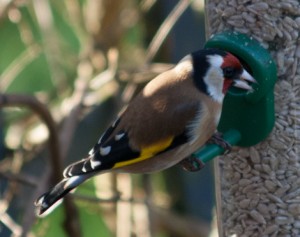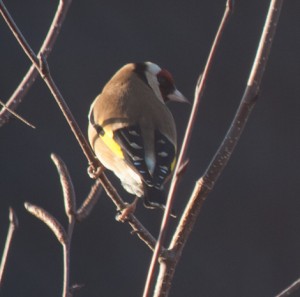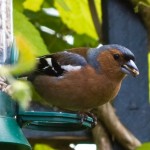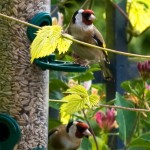Is it just me, or has anyone else noticed a complete lack of greenfinches in their garden this winter. I know the Big Garden Birdwatch has seen a big drop, but I can’t remember the last time I saw one anywhere, even in the country park.
What I do get a lot of are goldfinches – one of my favourite birds (although they are not as high up as bullfinches and long-tailed tits). We tend to get at least four or five a day in the winter, but we’ve had up to two dozen – quite a lot with only one bird feeder – but I have plans for next year… In the summer we tend to get some adults and fledglings in the garden, the chicks staying with us for some time. You can usually tell they’ve arrived by the cacophony of begging noises coming from outside.
However, whilst watching the birds I started to wonder if it would be possible to tell how many individuals come into the garden. I think the short answer is going to be not a chance, but it did lead me to wonder if there is an easy way to tell males and females apart.
According to many websites, yes you can. The males have more extensive red masks and black feathers around their beaks – the females also have shorter wings and white or grey feathers around their beaks. There is also a difference in the extent of the brown on their wings. Not simple, but doable with some effort. It was then that I came across and excellent blog by a bird ringer who dispelled all of these myths with examples of birds he’d caught and sexed with certainty (and there were plenty even he couldn’t be sure about).
However, there are some differences I have spotted, such as the size of the white spots on the wing tips and, how white they are. I am not sure if this will change with time, along with the black tip to some of the beaks – so it will be worth checking again in the summer when the only birds about will be adults. See the photos below – goldfinch 1 has mainly white spots with a hint of beige, but goldfinch 2 has spots that are much closer to beige than brown.
More work required methinks, ho hum, I will just have to stand at the window watching birds for hours.
However, as these charming birds are not very long lived in the wild it is probably just as well that I can’t differentiate them.
BTW if you wondered, apparently the name charm for a flock of goldfinches comes from the noise they make rather than their appearance.



